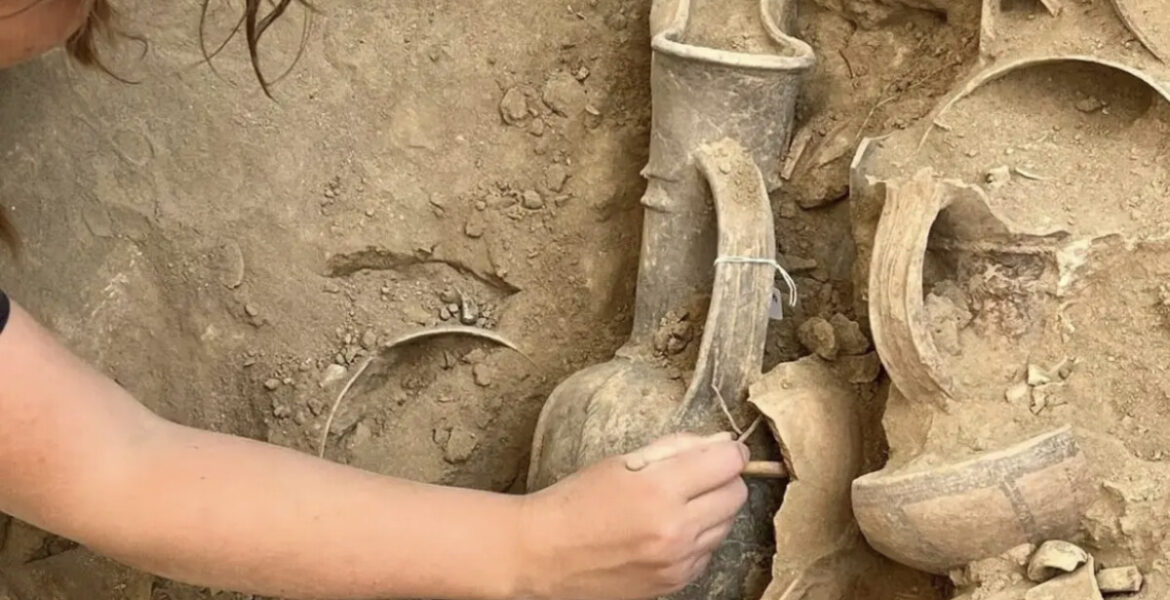Archaeologists from the University of Gothenburg have made an extraordinary find near the Bronze Age city of Dromolaxia Vizatzia, situated at Hala Sultan Tekke on the southeastern coast of Cyprus. The recently unearthed royal tombs, dating back to approximately 1500 to 1300 BC, are believed to be among the most opulent ever discovered in the Mediterranean region.
According to Professor Peter Fischer of the University of Gothenburg, it is reasonable to assume that these tombs belonged to royalty, although information about the governing structure of the city during that period remains scarce.
The site was initially detected through the use of magnetometers, devices utilised in geophysical surveys to measure the Earth's magnetic field and identify magnetic anomalies. By comparing the magnetometer map to an area where fragmented pottery had been displaced during farming activities, researchers discovered significant underground cavities approximately one to two meters below the surface. This prompted further investigation, leading to the remarkable discovery of the tombs.
The tombs themselves consist of underground chambers, each measuring up to 4 x 5 meters, accessible through narrow passageways from the surface. Within two of these chambers, archaeologists found over 500 intact artefacts, including precious metals, gems, bronze weapons, ivory, high-status ceramics, and a gold-framed seal crafted from haematite.
Approximately half of the tomb contents were imported from neighbouring cultures and civilisations. Gold and ivory originated from Egypt, precious stones were sourced from Afghanistan, India, and Sinai, while amber objects were traced back to the Baltic region.

During the excavations, remarkably preserved skeletons were also uncovered. Notably, one burial site contained the remains of a woman surrounded by dozens of ceramic vessels, jewellery, and a round bronze mirror.
Professor Fischer further revealed that both men and women buried in the tombs wore diadems, with some adorned with exceptionally high-quality necklaces featuring pendants likely crafted in Egypt during the 18th dynasty, corresponding to the reigns of pharaohs such as Thutmos III, Amenophis IV (Akhenaten), and his wife, Nefertiti.


